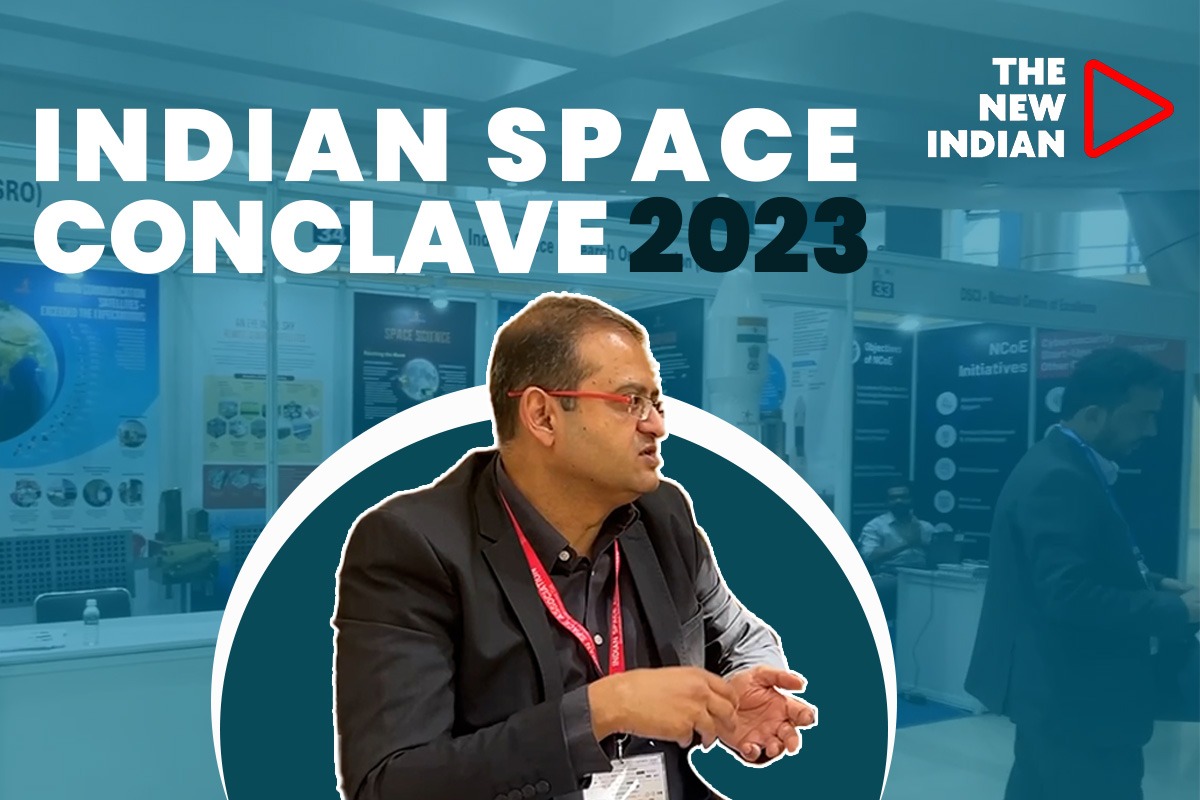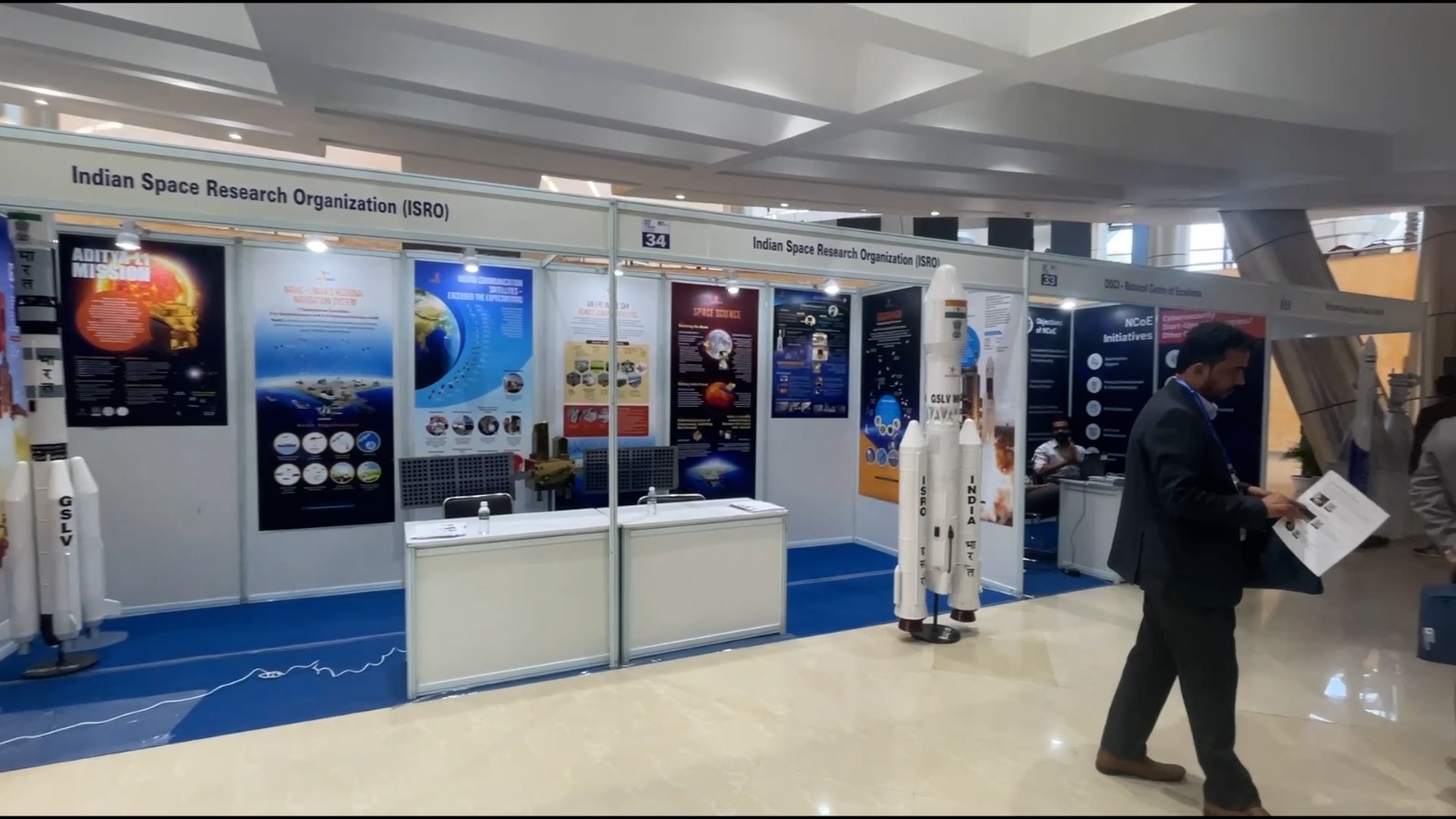


New Delhi: At the ongoing second edition of the three-day Indian Space Conclave in Delhi, which has a theme ‘Bhumandal se Brahmand Tak’, stakeholders from private defence and aerospace companies, alongside space experts, an American private company has pitched a move for India to have its own space centre, on the pattern of air traffic control (ATC), that will help it counter China’s aggression in space. The New Indian, which has been covering the event, spoke to IT Globes Incorporated’s business head Anshuman Verma on issues concerning the space industry. Excerpts…
Q: You spoke about space congestion and how there are so many satellites in space and there are chances that they can even collide, can you tell us about how that happens?
A: You would have obviously taken an air flight. You would have seen air traffic control towers. What do those towers do? They continuously monitor the various aircraft which are coming, and then they guide these aircraft into specific paths where you have to go up or down, take left or right.

A similar concept exists for space. Now, why it has become important for space now, is because the number of satellites launched in the last few years and planned in the next few years is very, very high. So, suddenly you have a situation where you will have a lot of flying objects or satellites in space one and two, you historically had the issue of a lot of space junk. So similar to air traffic control, India now needs to graduate to space traffic control, which is to manage and monitor what is happening with your space assets abroad.
India has to set up a space traffic management centre to manage Indian assets because the satellites are very expensive. And they are of national importance. There is a civilian aspect to this, which is that if a startup launches a new satellite, they start up on their own and to do this is very expensive. So somebody like ISRO or Indian Air Force should collaborate together and manage or create a centre where it manages the space traffic in and around India, both from a civilian as well as a defence perspective.
Q: And the involvement of defence or surveillance purposes?
A: See, typically we think that space is a civilian environment. However, as we all know, there are a lot of spy satellites or defence satellites also. The second thing that we have seen, we have seen hostile nations conduct anti-satellite tests, which they launched a missile and have destroyed a satellite in space.
Or there have been manoeuvres where unfriendly nations have sent their satellites close to our satellites to monitor us — the Chinese of course.
So in such situations, it is very important to treat space like another war zone front which needs to be actively monitored and managed in case a Chinese satellite comes close or they try to do anything which is against our interest, we should be aware about it and then take the necessary action to manage it
Q: You said Elon Musk launches satellites every few days. Is it really creating a problem in space?
A: While there is a lot of excitement amongst end users that mobile broadband is available in places where it was not available. But from a traffic perspective, Starlink is definitely a challenge I would say because there are so many satellites being launched by Starlink on a regular basis in different types of orbits that it is very important that we monitor and manage and see and it has created a space congestion problem if I can call it.
“ISRO has a very responsible way of managing mission life cycles, many countries do not bring down satellites. Then you have an over ambitious and hyper excited gentleman called Elon Musk who likes to launch satellites every few days”
says Anshuman Verma, Business head, IT Globe… pic.twitter.com/7MfYUidf3V
— The New Indian (@TheNewIndian_in) October 10, 2023
Q. ISRO has a life cycle mission too in which they bring down the satellite.
A. Yes, so ISRO has been one of the better agencies or let’s say an informed or very responsible agency and we are very proud of what ISRO is doing as a country. So ISRO makes sure that when their satellite mission is over and the life of the satellite is over, they safely try to bring that satellite back to earth and make sure that it is not left in orbit and it is deorbited and brought back.
Q. According to a report, the space industry right now is around 8 billion dollars and there are reports that we might achieve we might be at around 100 billion dollars.
A. If you take the US, a lot of the common infrastructure for the space industry in the United States is created by either NASA or the United States Department of Defense.
So both the civilian and defence aspects of space technology, you know, common facilities, launch facilities, a lot of access to common technology, technology development programs.
And of course, if I talk about space infrastructure, then a lot of the ground station monitoring and management, space domain awareness, etc., infrastructure is managed by the U.S. government. And maybe, (all countries) can charge the satellite operator some processing fee for it. But that is fundamentally run by the government because it involves a huge amount of upfront investment.
So similar moves by the Indian government will be very, very useful in order to achieve the targets that the government has in mind for the Indian space sector.